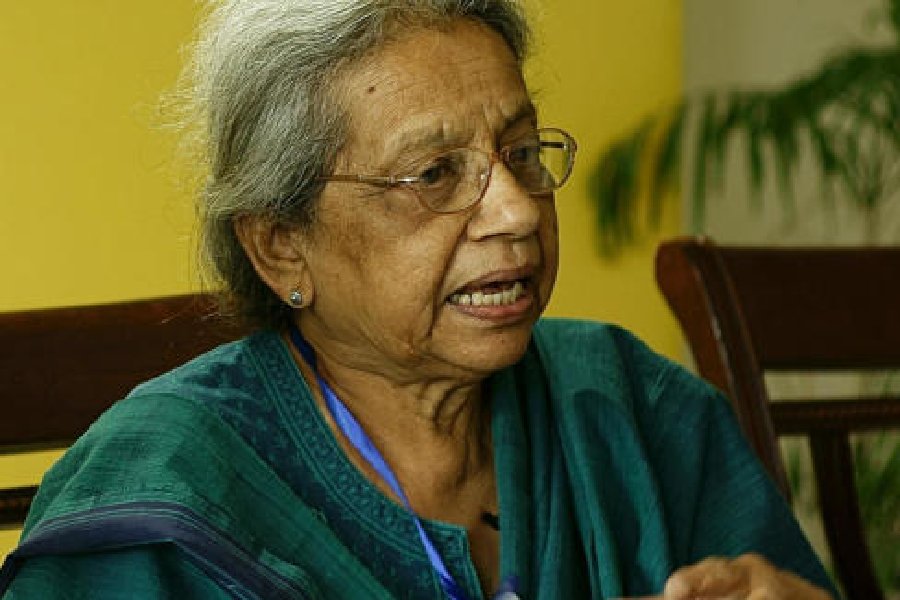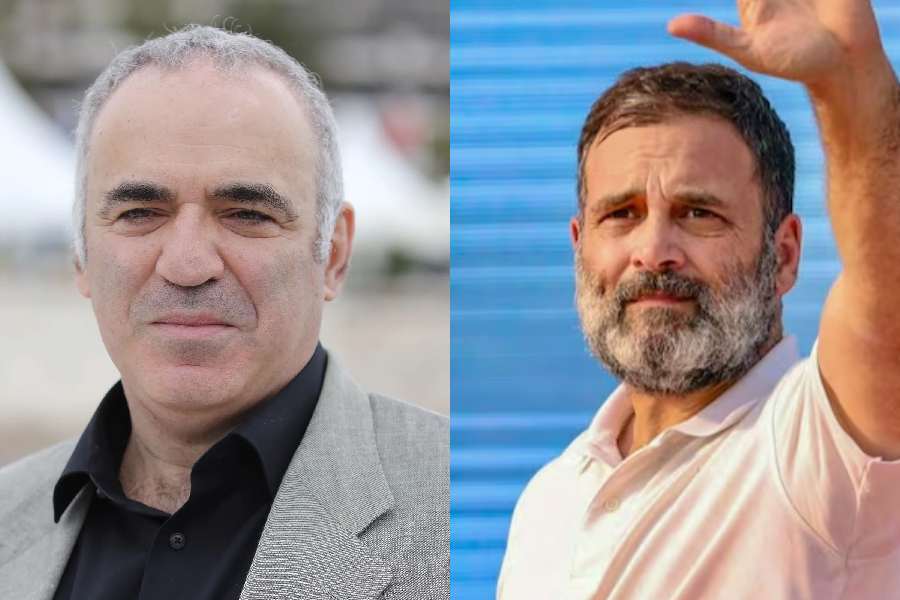The plan was to make one documentary. Historian Uma Chakravarti wanted to record the stories of women political prisoners. “History, as the saying goes, is the biography of great men,” she tells The Telegraph on the sidelines of the Kolkata People’s Film Festival, where her documentary film Zameer is being screened. Very few women make it to the pages of history, and none who are on the wrong side of power. Yet, believes Chakravarti, without the story of their struggle, history will be incomplete.
“I wanted to record their history as it was happening,” says the 80-year-old. Instead of one documentary, because of the vast material she eventually gathered, Chakravarti ended up making five separate ones on the subject. Zameer is the fifth.
The first political prisoner she documented was also her colleague. “I knew Khadija Ansari for years but had no idea that she was jailed under the Preventive Detention Act in Lucknow in 1949,” says the former professor of Delhi’s Miranda House.
Ansari was part of the Leftist movement. She was a minor when she was locked up but she ended up staying in jail for nine months because her family did not move court for her release. Ansari suspects it was to keep her out of further trouble. The magistrate who sent her to juvenile jail also officiated at her marriage years later. In any case, Ek Inquilab Aur Aaya: Lucknow 1920-1949 was followed by Prison Diaries, which is about actor Snehalata Reddy and other women who resisted the Emergency. Darbar-e-Watan, made in 2020, is about the impact of the conflict in Kashmir on women’s lives and friendships, while Yeh Lo Bayan Hamare is about young women from different parts of the country who became politically conscious during the Naxalite movement and their experiences of jail.
Both Yeh Lo Bayan Hamare and Zameer are stories of women political prisoners but deal with different periods. Zameer is about women jailed for being involved with, or accused of being involved with, the Maoist movement. Among them are Soni Sori and Hidme Markam of Chhattisgarh, and Sini Soy of Odisha who lost her son in the movement to defend their land from the mining industry. The documentary chronicles women who were jailed because they spoke truth to power — Lalita Barman of Assam, Shamim Modi of Mumbai, Dayamani Barla of Jharkhand.
Chakravarti’s foray into filmmaking was accidental. While she believed it was imperative to document the history of subcontinental women and the movements they were involved in, filmmaking wasn’t how she saw herself doing it.
It was 2007, she had been retired for nearly a decade and she had some experience of documentary films having often been featured as the resident expert. So when she heard the story of one Subbalakshmi, she thought it would make a great documentary. Subbalakshmi, like many of her contemporaries, had a huge trunk. Unlike her contemporaries however, her trunk was not full of expensive saris but stuffed with lists, scribblings and receipts, including one that noted she had donated Rs 63 in support of the salt Satyagraha. The reason the receipt had piqued Chakravarti’s interest was that Subbalakshmi’s husband had been a salt inspector under the British and had banned his wife from participating in the freedom movement after he learnt of her involvement. “It was fascinating to me that despite having very little agency, she still managed to defy her husband,” says Chakravarti, who was born in New Delhi in 1941 before the Quit India movement.
“I kept on asking the girls (her students involved in documentary making) to look into it but they couldn’t make time. So, I decided to do it myself,” she explains gleefully. She called in a favour from Sabina Kidwai of Jamia Millia Islamia and got her onboard to shoot the film. Says Chakravarti, “I knew nothing about filmmaking and here we were doing a documentary on a long-dead person with very few images available. I was adamant about not getting an actor to play her.” The film is evocatively shot with sepia tones and has just a suggestion of the main character, a blurred figure played by Subbalakshmi’s great-granddaughter.
And with that film, A Quiet Little Entry, Chakravarti made her own quiet entry into the world of filmmaking. She found that she loved this form of storytelling. Her stories of women political prisoners followed.
At the film festival, Puloma Pal, the editor of Zameer, spoke about the gems of conversations that had to be left out of the film, perforce. Fortunately, Chakravarti will soon release a door-stopper of a book — 650 pages, she says — that will contain transcripts of all the interviews she took for her political prisoner films.
“I thought Zameer would be my last film on women political prisoners, but I think I should do another one on the girls picked up because of their involvement in the anti-CAA movement,” she says.
Pension Pictures should be able to add one more film to their kitty. Yes, that is what Chakravarti calls her films. When the dressing room where the interview is taking place fills with chuckles, Chakravarti says, mock-offended, “What are you all laughing about? As I keep telling my daughter, who teaches in a private school, ‘At least I have a pension, you don’t’.”










